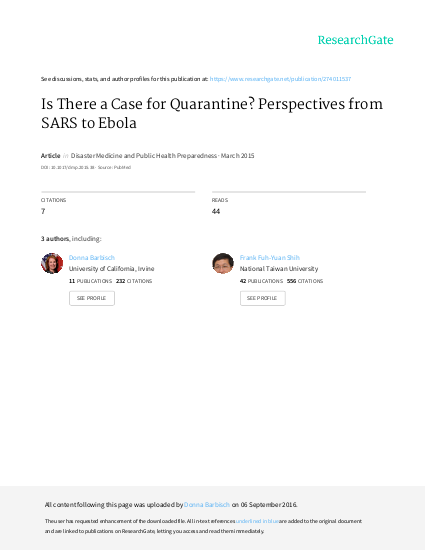
Quarantine has been used for centuries in an effort to prevent the introduction, transmission, and spread of communicable diseases. While backed by legal authority, the public and even the health care worker community’s understanding of the term is murky at best and scientific evidence to support the use of quarantine is frequently lacking. The multiple interpretations and references to quarantine, the inconsistent application of public health quarantine laws across jurisdictional boundaries, and reports of ineffectiveness, are further complicated by associated infringement of civil liberties and human rights abuses. Given the need to balance public safety with human rights, we must be more precise about its meaning and consider the efficacy and negative secondary effects resulting from the implementation of quarantine. This paper explains quarantine terminology and then uses a case study from Taiwan during the 2002-2003 severe acute respiratory syndrome (SARS) outbreak to illustrate key principles associated with quarantine measures taken during the 2014 Ebola outbreak and the potential hazards that can arise from quarantines. Finally, we provide a quarantine and isolation decision tree to assist policy makers and public health officials in applying medically defensible, outcomes based data and legal authorities to optimize management of emerging infectious diseases.
Resource collections
- COVID-19 Response Collection
- Learning from crises
- UN Habitat - Urban Response Collection
- Urban Response - Urban Crisis Preparedness and Risk Reduction
- Urban Response Collection - Community Engagement and Social Cohesion
- Urban Response Collection - Economic Recovery
- Urban Response Collection - Environment and Climate Change
- Urban Response Collection - Housing, Land and Property
- Urban Response Collection - Urban Crisis Response, Recovery and Reconstruction
- Urban Response Collection - Urban Resilience
